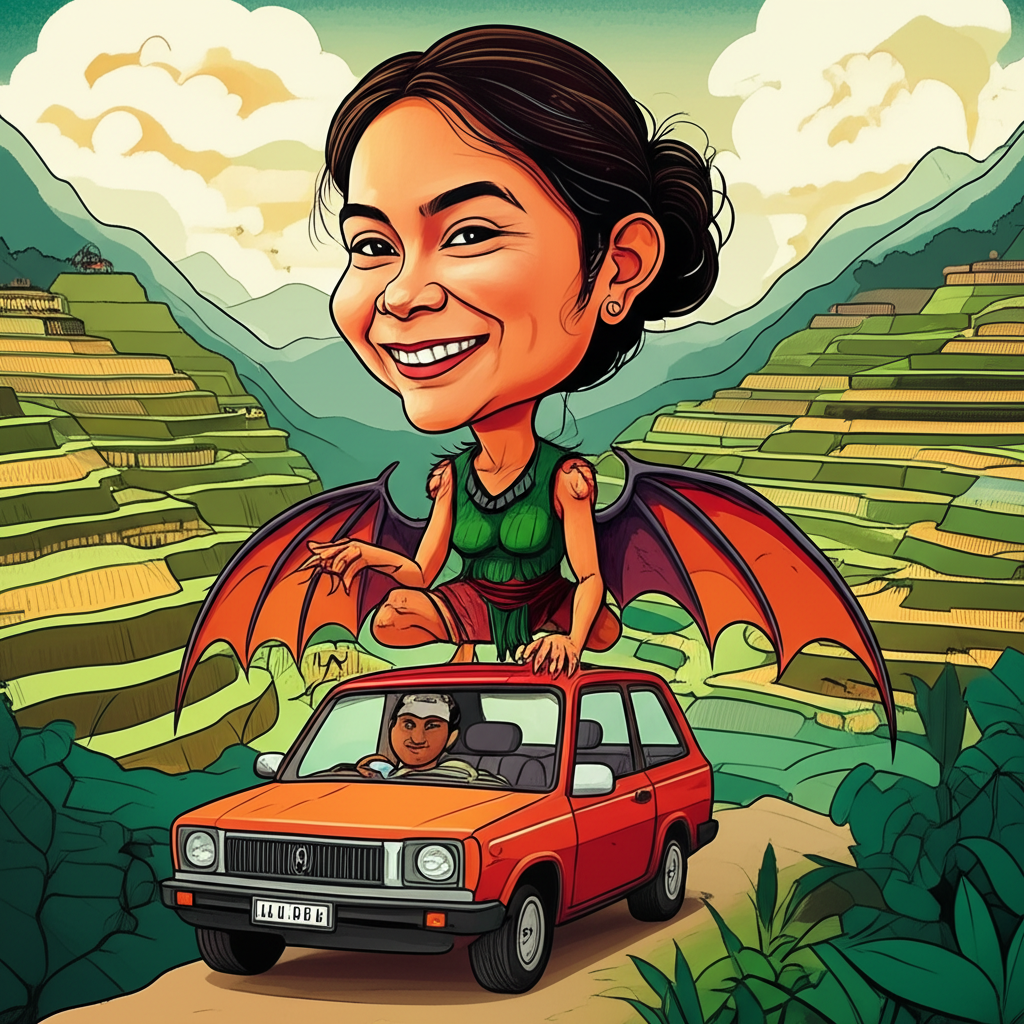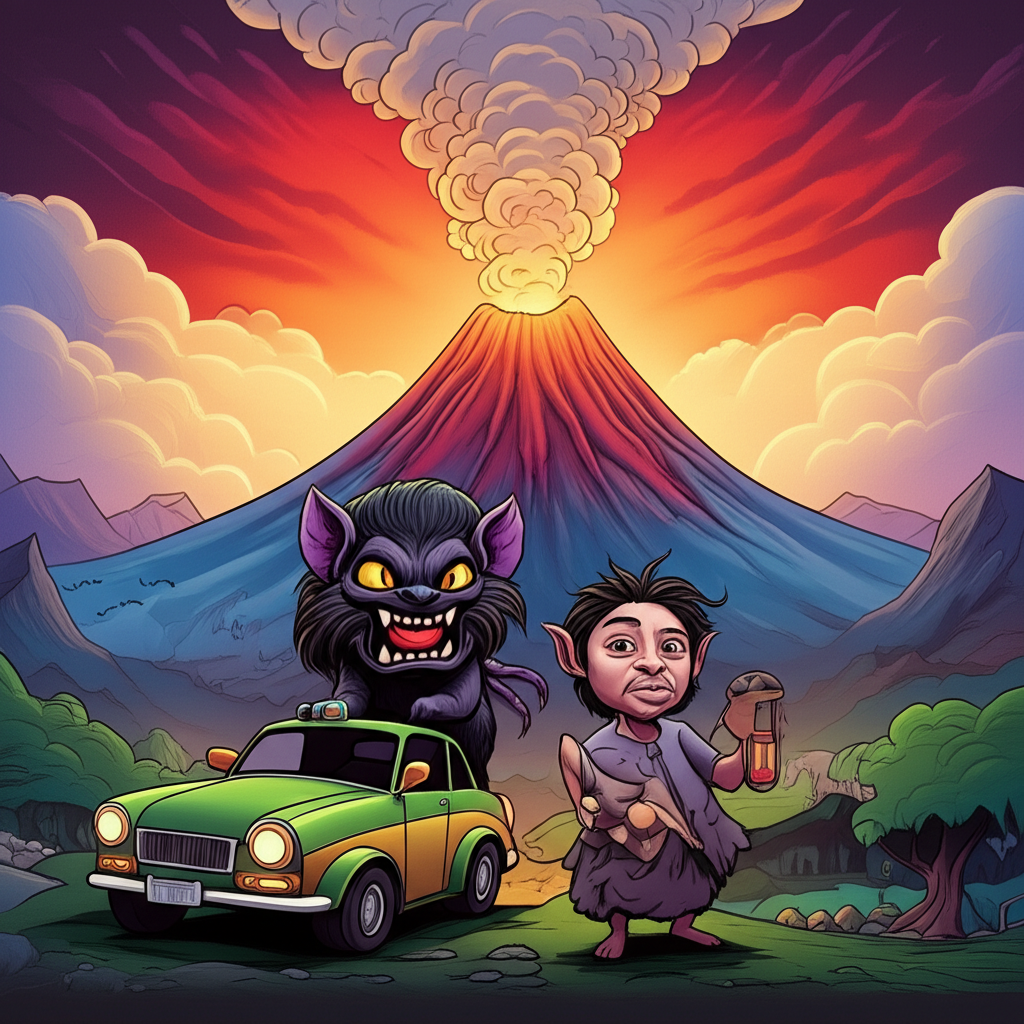
Introduction:
The Visayas, a cluster of islands in the central Philippines, is a region steeped in ancient lore. Here, amidst the rhythmic lapping of the waves against sun-kissed shores and the rustling of coconut palms, stories have been whispered for generations, tales that intertwine the divine with the monstrous, the sacred with the profane. One such tale speaks of the Aswang, a creature of nightmare woven into the fabric of Visayan belief, a figure whose origins are said to be intertwined with the echoes of Bathala, the supreme deity of pre-colonial Filipinos. This is not a history of truth, but a story told by ancient people, passed down through generations, reflecting their understanding of the world and their place within it.
Origins and Cultural Background:
To understand the Aswang, we must journey back to a time before colonization, a time when the Visayan islands were a patchwork of independent barangays (villages), each with its own customs, beliefs, and social structures. The people of this era lived in close proximity to nature, their lives dictated by the cycles of the sun, moon, and the tides. Their spirituality was animistic, believing that spirits inhabited everything – trees, rocks, rivers, and even the wind. Bathala, the all-powerful creator, reigned supreme, but beneath him existed a pantheon of lesser deities and spirits, both benevolent and malevolent.
Life was precarious. Disease was rampant, storms were frequent, and food was not always abundant. This uncertainty fostered a deep-seated fear of the unknown, a vulnerability that found expression in stories of creatures lurking in the shadows, beings capable of causing harm and disrupting the fragile balance of their world. The Aswang, therefore, emerged not as a literal being, but as a symbol of these fears, a manifestation of the anxieties that plagued the ancient Visayan mind. It was a way to understand and, perhaps, attempt to control the uncontrollable forces that shaped their existence.
Character / Creature Description:
The Aswang is not a singular entity, but rather a collective term for a variety of shapeshifting creatures, often female, with a thirst for human blood, particularly that of unborn children. In its most common depiction, the Aswang appears as an ordinary person by day, indistinguishable from their neighbors. By night, however, they transform into a grotesque hybrid – a creature with bat-like wings, sharp claws, and a long, hollow tongue that it uses to suck the life out of its victims.
Symbolically, the Aswang represents the inversion of societal norms. While the ideal woman in ancient Visayan society was nurturing, maternal, and protective, the Aswang is predatory, infanticidal, and destructive. Its ability to shapeshift also symbolizes the deceptive nature of appearances, a warning against trusting too easily and a reminder that danger can lurk beneath a seemingly harmless facade. The Aswang is not just a monster; it is a reflection of the darkest aspects of human nature, amplified and distorted through the lens of fear and superstition.
Main Story / Narrative Retelling:
In the tranquil village of Silay, nestled on the shores of Negros Island, lived a woman named Elena. She was known for her kindness, her gentle smile, and her willingness to help anyone in need. But beneath this veneer of benevolence lurked a terrible secret. Elena was an Aswang.
During the day, she tended her garden, gossiped with the other women, and attended to her duties as a respected member of the community. But as dusk settled, a transformation would begin. Her eyes would turn bloodshot, her skin would become pale and clammy, and an insatiable hunger would gnaw at her insides.
One starless night, as the village slept soundly, Elena shed her human form. Her bones contorted, her limbs elongated, and leathery wings sprouted from her back. With a silent flap, she took to the air, soaring over the sleeping huts, her keen senses searching for the telltale signs of a pregnant woman.
She found her target in the hut of young Maria, who was nearing her term. Elena landed silently on the nipa roof, her sharp claws barely making a sound. She lowered her long, proboscis-like tongue through a crack in the roof, aiming for Maria’s womb.
But tonight, fate intervened. Maria’s husband, Juan, had been restless, haunted by a persistent unease. He stirred in his sleep and opened his eyes, just in time to see the grotesque appendage descending from the ceiling. With a cry of alarm, he grabbed his bolo knife and slashed at the tongue, severing it clean.
The Aswang shrieked in agony and retreated, leaving a trail of black blood on the roof. Juan, trembling with fear and rage, alerted the villagers. They armed themselves with bamboo spears, salt, and garlic – weapons believed to ward off the evil creature.
Following the trail of blood, they tracked Elena to her house. As they burst through the door, they found her writhing on the floor, clutching her bleeding mouth. The villagers knew then that their suspicions were confirmed. Elena, the kind and helpful neighbor, was the Aswang that had been terrorizing their village. With heavy hearts, they did what they felt they had to do, ending her reign of terror and restoring peace to Silay.
Symbolism and Meaning:
The story of Elena, like all Aswang tales, is more than just a simple horror story. It is a complex allegory that explores themes of good versus evil, the dangers of deception, and the importance of community. The Aswang’s insatiable hunger for unborn children represents the fragility of life and the constant threat of death that pervaded ancient Visayan society. It is a cautionary tale about the importance of protecting the vulnerable and maintaining the social order.
Furthermore, the Aswang can be interpreted as a metaphor for the societal anxieties surrounding female power. In a patriarchal society, women who deviate from traditional roles or who possess unconventional strength are often viewed with suspicion and fear. The Aswang, as a powerful and independent female figure who defies societal norms, embodies these anxieties.
Modern Perspective:
The Aswang continues to captivate the imagination in modern Philippine culture. It is a popular subject in literature, movies, television shows, and video games. However, these modern depictions often sanitize the original myth, transforming the Aswang into a romanticized figure or a symbol of resistance against oppression.
In cultural studies, the Aswang is analyzed as a reflection of colonial anxieties and the struggle to maintain cultural identity in the face of Western influence. The story also serves as a reminder of the power of storytelling and the enduring appeal of folklore in shaping cultural identity.
Conclusion:
The tale of the Aswang and its echoes of Bathala is a testament to the rich and complex tapestry of Visayan folklore. It is a story that has been passed down through generations, evolving and adapting to reflect the changing concerns and anxieties of the people who tell it. It is crucial to remember that this is a cultural story, not a belief. As Muslims, we recognize that only Allah is the true Creator and Sustainer of the universe.
The Aswang myth, while rooted in fear and superstition, also offers valuable insights into the values, beliefs, and worldview of the ancient Visayans. It reminds us of the power of imagination, the importance of storytelling, and the enduring legacy of our cultural heritage. It encourages us to explore the depths of human experience, to confront our fears, and to celebrate the richness and diversity of our cultural traditions. While we do not believe in the literal existence of the Aswang, we can appreciate the story as a window into the past, a reflection of the human condition, and a reminder of the enduring power of storytelling to shape our understanding of the world.





